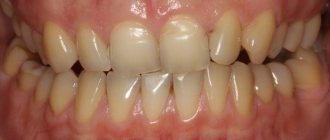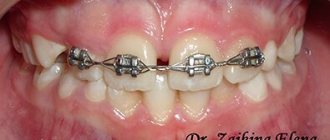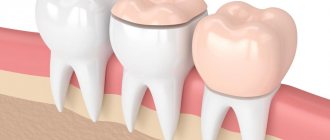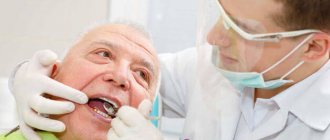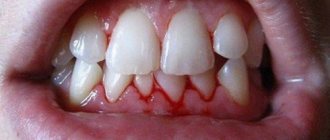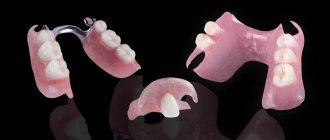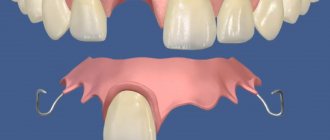Problems in a sensitive area (anus) are often an obstacle to prompt access to a medical facility. False shame, the expectation that everything will go away on its own, self-medication - these negative aspects can significantly worsen the patient’s condition.
Which doctor should I contact for hemorrhoids? Diagnosis, identification of symptoms, and most importantly, treatment of this disease is carried out by a proctologist.
The departments that provide assistance for pathologies in the rectum, colon, and anus are called proctological departments. The most modern term for a doctor in this specialization is coloproctologist.
Changes in terminology are associated with the expansion of the boundaries of the proctological medical field, which includes the diagnosis and treatment of not only the rectum, but also the large intestine.
Phlebeurysm
The cause of varicose veins is a malfunction of the venous valves. With this disease, the walls of the vessels of the legs expand and deform, as a result of which the veins cease to function normally. Most often, the disease affects the thin saphenous veins, which over time stretch and become visible under the skin (like lumps).
This is what varicose veins look like
Both women and men are at risk (and they get sick quite often). The main symptoms of varicose veins are swelling, heaviness in the legs, night cramps, and pain. Swelling usually increases in the evening and goes away after rest. In the last stages of varicose veins, pain and swelling are constantly present. A competent angiologist is able to diagnose the disease at an early stage and prescribe treatment in a timely manner.
Diagnostic methods
Now that we have figured out what kind of doctor an ophthalmologist is, let's look at what diagnostic methods he uses. The first step is a visual examination, but then the doctor can use a whole arsenal of modern diagnostic equipment to select the optimal treatment.
An ophthalmologist diagnoses eye diseases using the following methods:
- tonometry - measurement of intraocular pressure;
- refractometry - a study of refraction to identify myopia, farsightedness, astigmatism;
- visometry - a study of visual acuity familiar to everyone from childhood using tables with letters/images;
- color test to determine the ability to distinguish shades;
- ultrasound and optical biometry - study of the physical characteristics of the eye, the condition of the cornea and lens;
- ophthalmoscopy - examination of the eye using an ophthalmoscope, which allows you to examine the internal structures of the eye;
- biomicroscopy - study of the structure of the eye using a slit lamp;
- angiography - examination of the condition of the blood vessels of the eye by introducing a special dye;
- tonography - measurement of the rate of outflow of aqueous humor, necessary for glaucoma.
Atherosclerosis
With atherosclerosis, the vessels of the whole body suffer, most of all the vessels of the legs, heart, kidneys, and brain. Atherosclerosis is a chronic disease in which plaques of fat and cholesterol are deposited on the inner walls of blood vessels. At the same time, the walls of blood vessels lose their elasticity and become denser. As a result, the lumen through which blood flows narrows and blood flow becomes difficult. The first symptoms of the disease are forgetfulness, memory lapses, then the person’s mood often changes, depression may set in, sleep is disturbed, coordination of movements becomes worse, concentration and attention weaken, headaches often occur and mental abilities deteriorate. The task of the angiologist in this case is to take control of the process as soon as possible and relieve unpleasant symptoms.
Pap test - what is it?
During a gynecological examination, a so-called cytological examination is often performed. The Pap smear is the first and main means of preventing cervical cancer, one of the most dangerous malignant neoplasms in women. A cytologist can detect precancerous conditions, which, combined with further diagnosis and treatment, gives an almost 100% chance of complete recovery.
Technically speaking, a cytological examination consists of taking cervical epithelial cells (after opening the vagina with a speculum), and then using laboratory smears, fixing and staining the resulting material on a special glass. In this way, a specialist can assess the condition of the cervical cells. If the Pap smear results are abnormal, the patient will be referred for further testing, including colposcopy.
ONLINE REGISTRATION at the DIANA clinic
You can sign up by calling the toll-free phone number 8-800-707-15-60 or filling out the contact form. In this case, we will contact you ourselves.
Aneurysm
With an aneurysm, the wall of an artery of the heart (in rare cases, a vein) bulges because it has become too thin and stretched. Because of this, an aneurysmal sac appears, which compresses nearby tissues. A ruptured aneurysm causes hemorrhage, which often leads to death. At the first symptoms, it is important to consult an angiologist as soon as possible, who will prescribe treatment.
Important! When an aneurysm ruptures, the patient feels pain and his blood pressure rapidly drops. In this case, the person needs urgent medical attention.
Aneurysm can be congenital or acquired. If it is present in a child, then from the first days of his life the disease may not be noticed, because the child grows and develops normally until a rupture occurs. Acquired aneurysm is a consequence of atherosclerosis, hypertension, late stage of syphilis; the risk of the disease increases when the vessel is injured and when infected blood clots form.
How to choose a clinic and a doctor without being disappointed?
Today it has become very popular to choose doctors based on reviews on the Internet. This method seems at first glance convenient, fast and simple. But do not forget that reviews do not always reflect reality. In addition, the principles of a doctor’s work very often depend on the norms and rules established in the clinic.
Therefore, look not only for a good urologist, but also for a good clinic! When searching, we recommend paying attention to the following nuances:
- Are there urologists with a narrow specialization in the clinic?
If there are doctors who specialize in male urologist-andrologist and female urologist, this is definitely a good sign. It’s even better when not everyone is signed up for a consultation, but when talking on the phone they explain what diseases the clinic specializes in. This approach demonstrates the respectful attitude of the clinic owners towards both patients and doctors. With this approach, the possibility of wasting time is almost completely eliminated for both parties. - Is it possible to schedule a consultation at a convenient time?
Most diseases in urology require fairly long-term therapy (one course can last an average of 2-3 weeks). We recommend that you make sure in advance that doctors work in this particular medical center at least 5 days a week, on different shifts. This schedule provides an almost 100% guarantee that you will be able to see your doctor at a convenient time. - How long does the initial appointment last?
What does it include? The optimal duration of the first dose is 30-40 minutes. The initial consultation is a very important stage. Both the doctor and the patient need to receive a fairly large amount of information from each other. The accuracy of the diagnosis and the ability to identify contraindications before the start of treatment largely depend on this. In addition, it is very important to carry out an examination on the day of the first visit - examination, ultrasound, urological tests, tests. This is especially important when you experience pain or problems with urination. After all, if a comprehensive examination is carried out during the initial appointment, the doctor will be able to give the first recommendations on the same day. - What is included in the cost of treatment?
There are two main options.One of them involves paying for each medical service separately
. That is, you pay for each consultation with the attending physician, for each injection and any other service. You purchase all prescribed medications at the pharmacy. If the drug is not suitable, again, buy another one yourself. If you need to expand the course by adding additional procedures, you pay again.
The second option is to pay for the full course of treatment. You do not pay for the N number of different services, but for a comprehensive program on the “All inclusive” principle
. This program includes everything you need:
- procedures;
- drugs (painkillers, anti-inflammatory, antifungal, antibiotics, etc.);
- Consumables;
- consultations with the attending physician - in person and by telephone;
- additional examinations (for example, tests, ultrasound, urological tests);
- additional procedures and medications (if necessary);
- observation after treatment.
- Is there a pre-registration for procedures?
A “waiting queue” for paid medicine is not an option. You must be sure that when you arrive at the clinic at the appointed time, you will get to the treatment room or to the doctor, who are waiting for you at that moment. - Is it possible to pay in stages (installments/credit)?
Surprisingly, as practice shows, such services are still not provided in every paid urology. Of course, prices in Russian clinics are several times lower than abroad. However, whatever the cost, you should have the opportunity to choose the most comfortable payment option.
The choice is always up to the patient. If the problem is not serious, then it may turn out that it is more profitable to pay for each service individually. However, you need to understand that with this option you will be forced to pay essentially “for every minute of the doctor’s attention.”
When choosing the “All inclusive” option, you pay once, and you are treated until a state of stable remission is achieved.
Phlebitis
Phlebitis is an inflammation of the vein wall with its gradual destruction; it can be acute or chronic. The main danger of the disease is the high risk of blood clot formation and complete blockage of the vessel. Most often, phlebitis is caused by past infections and inflammation. However, the inflammatory process can also begin if a substance that irritates the vessel wall enters the bloodstream. Phlebitis can affect deep and superficial veins.
Depending on which particular vessel wall is inflamed, phlebitis is divided into three types:
- endophlebitis – inner wall;
- periphlebitis – outer wall;
- Panphlebitis is a common form, all membranes are affected.
An angiologist treats any form of this disease; you need to go to a doctor if there are any signs of unhealthy veins, and he will accurately determine the disease.
What is the name of the doctor who treats eyes?
Eye doctors in our country are traditionally called ophthalmologists. What kind of doctor is this - an ophthalmologist and what are the specifics of his work? In fact, from the point of view of terminology, “ophthalmologist” and “ophthalmologist” are synonyms. The word "oculus" is of Latin origin and means "eye". "Ophthalmos" is also "eye", only in ancient Greek. Thus, there is no difference between the names of professions. Based on the etymology, you can understand what an ophthalmologist means - a doctor who treats eye diseases.
In Western European countries, the term “ophthalmologist” is used. Gradually, Russian clinics are beginning to actively implement it. It would be a misconception to think that an ophthalmologist is a different profession. He does the same thing as an ophthalmologist - he treats the eyes and organs of the visual system. Moreover, any specialist can have a narrower specialization: for example, there are ophthalmological surgeons, pediatric ophthalmologists, etc.
Thrombophlebitis
This is inflammation that occurs due to varicose veins. If left untreated, the inflammation will spread to the deep veins, and as a result, the risk of blood clots moving through the bloodstream increases, causing a pulmonary embolism - a fatal disease. Superficial thrombophlebitis is first felt as a worsening of varicose veins, to which a person is already accustomed, so many do not pay attention to the alarming symptoms. However, you need to urgently consult an angiologist if you:
- it hurts where varicose veins are present;
- the pattern of the saphenous veins becomes clear, it hurts to touch it;
- seals appear around the vein, they are painful and noticeable;
- body temperature rises sharply to 39℃, you feel feverish and shivering;
- near the veins it swells sharply, turns red, and swells.
If necessary (depending on the stage of the disease), the patient is referred to an angiologist surgeon for further treatment.
How to understand what you need to see a therapist
Based on your symptoms, you can first determine that you should seek help from a therapist:
- Pain is felt in different parts of the body;
- Presses or pulls in a certain place;
- There is discomfort and constant fatigue;
- Concentration decreases, absent-mindedness and forgetfulness increase;
- Blood is noticed in the urine or stool.
Well-being is influenced not only by natural factors and age-related changes. Your body signals a problem in every possible way. Therefore, you should not ignore obvious symptoms.
Phlebothrombosis
Phlebothrombosis is the primary formation of a blood clot in the deep vessels of the legs; the vein is blocked by a blood clot, but no inflammation is observed. Usually the disease focuses on the deep veins of the leg, its back surface. Phlebothrombosis is dangerous because it increases the risk of developing pulmonary embolism and postthrombophlebitis syndrome. This disease is typical for older people, but now it is rapidly getting younger. Phlebothrombosis can be caused by blood stagnation, damage to the vessel wall, and increased blood clotting. The main triggers are oncology and chemotherapy, pregnancy, cardiovascular disorders, the postpartum period, obesity, hormone therapy or oral contraceptives.
Symptoms are pain in the legs, which becomes stronger with movement, slight swelling, and the pain is bursting in nature. If several vein trunks are affected, the skin may turn blue and swelling may increase. After physical activity, the condition worsens, the person tries to move the affected leg less. When the femoral vein is damaged, swelling quickly increases, the venous pattern becomes clearly visible, that is, the veins become full, the skin turns blue, body temperature rises, and the lymph nodes enlarge. With the listed symptoms, the patient urgently needs the help of an angiologist who treats this disease in the initial stages or gives a referral to an angiologist surgeon.
Phlebothrombosis
Why are moles dangerous?
Moles, which are scientifically called pigmented nevi, can turn into a malignant tumor - melanoma. Melanoma is truly dangerous, because it can lead to the death of a person within a few months. Of course, not every mole (nevus) will necessarily turn into melanoma, but any of them can theoretically do so. People with fair skin and a large number of nevi are at particular risk. Another “aggravating factor” is heredity; If one of your relatives has or had melanoma, then the person has an increased risk of developing this tumor.
How to reduce the risk of melanoma? Scientists now believe that the main method of prevention is sun protection. Sunburn and sun exposure in general increase the risk of developing melanoma. Accordingly, to reduce it, you need to use products with a high SPF, avoid walking under the scorching sun and sunbathe less often.
Obliterating endarteritis
Obliterating endarteritis is a chronic inflammation of peripheral vessels, due to which their lumen gradually narrows, and blood flows worse to the legs. As a result, ischemia appears in the legs, and this is a direct path to gangrene. The prognosis depends on the stage of the disease at which the patient came to the doctor, concomitant diseases and a number of other factors are important. In the worst case scenario, the leg is amputated.
This disease affects men more often, 10 times more often women, the vulnerable age is 20-40 years. Usually it all starts with a spasm of the peripheral arteries. In the first stages, blood flows poorly to the limbs only during physical activity, and over time, the deficiency worsens. In the last phase, the vessel is completely closed, necrosis begins in the legs and gangrene develops. Moreover, other vessels may also be involved in the process; in this case, they speak of a generalized form of obliterating endarteritis.
Symptoms depend on the stage, and in total the disease has 4 stages of development:
- I – after a walk of 1 km, pain appears;
- IIa – pain appears when walking 200 meters or more;
- IIb – pain occurs when walking distances of less than 200 meters;
- III – pain appears at rest and when walking 25 meters;
- IV – ulcers and foci of necrosis appear.
The task of the angiologist is to prevent the disease from progressing to later stages. If this has already happened, then an angiologist surgeon treats this disease.
Diagnosis
Which doctor should you contact with hemorrhoids to clarify the diagnosis - a coloproctologist. It is this medical specialist who will help, using modern equipment, to assess the extent of the disease, its stage, and therefore recommend the most effective treatment course.
The effectiveness of hemorrhoid treatment largely depends on diagnosis. Innovative technologies make it possible to examine a patient and simultaneously display everything that is happening on the monitor screen.
The examination is comfortable for the patient and is carried out by a proctologist in the office. The patient lies on his side and draws his knees in, the doctor inserts a sensor into the rectum and examines the condition of the rectum, mucous membrane, and anus.
To make the patient more comfortable, he is offered to use special proctological underwear, covering open areas of the body. If agreed with your doctor, an anesthetic gel may be used.
Raynaud's syndrome
With this syndrome, a spasm of the hands occurs in the cold or under stress; it is reversible, as is a change in skin color. During an attack, one or more fingers may turn pale, blue, etc. One finger may have one manifestation, another may have another. Sometimes Raynaud's syndrome affects the tongue or nose. Although the symptoms sometimes frighten people, treatment is simple - protection from the cold, quitting smoking, working with a psychologist, taking medications. This disease is treated by an angiologist who prescribes medications and, if necessary, refers to a psychologist.
Women are more susceptible to Raynaud's syndrome, and young women are more likely to suffer from the disease. This disease is caused by excessive α2-adrenergic activity, due to which vasospasm occurs, the mechanism of which has not yet been established by medicine.
The primary form occurs most often - in approximately 80% of cases. It develops without signs of another disease, and in case of secondary disease, patients are diagnosed with various concomitant conditions and diseases, mainly related to connective tissue.
Symptoms, in addition to changes in skin color, are a feeling of cold, goose bumps, burning sensation, a clear boundary of color change appears on the fingers, transitions can be one-, two- and three-phase, often the changes are symmetrical.
What does an ophthalmologist treat?
Answering the question of what kind of doctor is an ophthalmologist and what he treats, we will list the most common diseases.
1. Glaucoma.
2. Cataract.
3. Refractive errors - myopia, farsightedness, astigmatism.
4. Strabismus.
5. Ptosis.
6. Retinal diseases (detachment, dystrophy).
7. Injuries to the eyes, eyelids, lacrimal glands.
8. Inflammatory eye diseases (conjunctivitis, keratitis, barley, etc.).
9. Color vision disorders.
10. Hemorrhages.
Many vision problems are caused by diseases of other organs. This means that an ophthalmologist also treats pathologies associated with hypertension, atherosclerosis, diabetes, difficult pregnancy or childbirth, and renal failure.
Systemic vasculitis
This is a group of diseases that occur due to inflammation of the walls of blood vessels. Symptoms vary depending on which vessel is affected and the severity of the inflammation.
Vasculitis is:
- Primary – vascular damage as an independent process. They may appear as spots, rashes, ulcers, etc., but there are no other signs of inflammation.
- Secondary is a complication of any cancer or infection, so treatment should be carried out by a specialized specialist, to whom an angiologist refers. Vasculitis often occurs against the background of viral hepatitis.
Depending on the size of the vessel that is inflamed, vasculitis is divided into three groups: with damage to small vessels (Churg-Strauss syndrome, Wegener's granulomatosis), medium ones (polyarteritis nodosa, Kawasaki disease), large ones (Horton's disease, Takayasu arteritis). Symptoms depend on the type of vessel affected; these can be:
- Hemoptysis, shortness of breath, cough, suffocation - with lung damage;
- Increased blood pressure, edema – kidney damage;
- Ulcers, discoloration of the integument, gangrene, rashes - skin;
- Rashes and ulcers in the mouth - mucous membrane;
- Loss of vision, redness, pain and stinging in the eyes;
- Decreased hearing, discharge from the ears and nose, impaired sense of smell, hoarseness, nosebleeds - ENT organs;
- Convulsions, dizziness and headaches, stroke, epileptic seizure – nervous system;
- Diarrhea, abdominal pain, blood in stool - gastrointestinal tract;
- Irregularities in the functioning of the heart, chest pain, increased blood pressure - cardiovascular system;
- Increased body temperature, weakness, weight loss are common symptoms.
For women (18+)
A doctor who treats female urological pathologies is called a “urogynecologist” or “urologist-gynecologist.” The most popular female urological problems are:
- cystitis;
- urethritis;
- overactive bladder.
Among the symptoms for which you should immediately visit a female urologist:
- frequent urination;
- pain, burning, cramping when urinating;
- feeling of incomplete emptying of the bladder;
- urinary incontinence (involuntary release of drops of urine when sneezing, coughing, laughing and other sudden movements).
Diabetic angiopathy
With this disease, the lumen of the blood vessels narrows or they become completely blocked, blood circulation is disrupted, and various organs, limbs, the retina, and the brain can be affected. In some cases, even amputation of a limb is necessary due to gangrene, which develops against the background of venous or arterial insufficiency.
Impaired blood flow due to blockage of a vessel
The disease can be of several types:
- Microangiopathy – small vessels are affected;
- Macroangiopathy – large vessels are affected;
- Combined – small and large vessels are affected.
Treatment is carried out by an angiologist or an angiologist surgeon, depending on the stage and symptoms.
Due to the narrowing of blood vessels in the lower extremities, ischemia begins, which is a deficiency of blood supply and oxygen. As a result, the function of the legs is impaired, ulcers appear, areas of necrosis, and then gangrene. The feet suffer the most, a person’s legs become numb and cold, goosebumps run throughout the body, cramps and pain occur, ulcers appear on the feet, and the skin changes. When the vessels are not severely affected, a slight tingling sensation is felt.
Additional Research
Children are prescribed the following tests as part of their medical examination:
- General blood analysis . Recommended for everyone after reaching 12 months. Most often, it is used to detect iron deficiency anemia. So, when hemoglobin “drops” below 100 g/l, it is necessary, firstly, to take a course of iron supplements, and secondly, to hold off on vaccinations, with the exception of the Mantoux test.
- General urine analysis . Aimed at identifying pathologies of the urinary system.
- Stool analysis - general and for helminth eggs. Allows you to exclude enterobiasis.
- Perinatal scraping . Makes it possible to detect pinworm eggs, which are located in the perinatal folds. If the diagnosis is confirmed, then treatment is carried out, then a new examination, and then vaccination.
- ECG . The simplest and most informative way to study the activity of the heart. It is painless, fast and safe. Using an ECG, heart rate, metabolic disorders of potassium, magnesium and calcium are detected, as well as a number of diseases, including angina pectoris, heart defects, metabolic disorders, etc.
Emboli
With this disease, the vessel is blocked by an embolus, which may consist of fat, a blood clot, or an accumulation of air. The causes can be any foreign masses that enter the bloodstream, for example, particles of adipose tissue, detached blood clots, amniotic fluid, parasites, protozoa, and fragments from injury.
Symptoms vary depending on the type of embolism:
- Fatty – disorientation, increased excitability, delirium, apathy, respiratory dysfunction, acute respiratory failure;
- Air – focal neurological disorders;
- Bacterial – sepsis;
- Pulmonary embolism – pain in the heart area, shortness of breath, fainting, lack of pulse. This is a potentially fatal condition.
This disease is treated by an angiologist surgeon, in some cases simply by an angiologist, but rarely.
Gynecological examination through the anus
In young girls, as well as girls and women who have not yet entered into sexual activity, a gynecological examination is usually performed through the anus, using the adjacent and parallel position of many internal organs.
Only a thin layer of peritoneal membrane separates the rectum from the reproductive organs in the pelvic cavity - this is the so-called sinus of Douglas, also known as the rectouterine space. This way, the doctor can evaluate the uterus, ovaries and fallopian tubes, as well as examine the rectum (excellent prevention of colorectal cancer).
The presence of fluid can indicate many serious conditions, including inflammation of the ovaries or fallopian tubes, enteritis, ectopic pregnancy, ruptured ovarian cysts, and bowel cancer. To confirm or rule out suspicions, if fluid is detected in the area of the Douglas pouch, a sample is taken for analysis.
Hemangiomas
Hemangioma is a benign vascular tumor that occurs mainly in children, more often in girls. Its type is lymphangioma, that is, a benign tumor of the lymphatic bed. Tumors appear immediately after birth, they are mainly found on the head and neck, sometimes they are found on internal organs.
Both tumors are noticeable visually - it is a thickening that is higher than the level of the skin. When pressed, the formation decreases and then restores its size. Hemangiomas grow quickly, and it is impossible to predict their behavior.
Lymphangioma grows more slowly and is located in places where there are many lymph nodes.
The reasons are hormonal characteristics of childhood, especially with prematurity, viruses that a woman suffered during pregnancy, and side effects of drugs during pregnancy.
If you find a tumor in your child, you need to contact an angiologist who treats this disease or, if necessary, refers you to a vascular surgeon.
Types of gynecological examinations
The content of the article
Gynecological diagnostics includes a number of tests. The basis is a standard multi-stage gynecological examination to assess individual elements of the genital tract and breasts. Usually the doctor examines the patient vaginally, but in special cases a rectal examination is performed.
Other types of gynecological examinations include:
- Ultrasound of the genital tract - performed vaginally, through the rectum or abdominal wall;
- cytology - microscopic evaluation of a smear of cellular material taken from the disc and cervix;
- colposcopy - to check for abnormal cytology results, an examination using an optical device called a colposcope;
- hysterosalpingography - study of fallopian tube patency, which consists of conducting an X-ray examination after the administration of a contrast agent;
- laparoscopy - performed under general anesthesia, used to assess the condition of internal organs, and also allows for a therapeutic procedure (for example, to clean the fallopian tubes);
- hysteroscopy - also performed under anesthesia to examine the internal walls of the uterus;
- Breast ultrasound is an ultrasound examination used to prevent and diagnose breast cancer, especially in young women;
- mammography - examination of the breast using X-rays, especially effective in mature women;
- needle biopsy is a type of biopsy that involves taking a sample of a tumor to evaluate its malignancy.
Breast ultrasound
Symptoms that should prompt you to contact an angiologist
You should contact an angiologist if you have:
- swelling, heaviness, fatigue in the legs for no apparent reason;
- spider veins and networks;
- the venous pattern has intensified, it hurts to touch, it is hot to the touch;
- veins become inflamed;
- varicose veins;
- trophic ulcers appear;
- the skin of the limbs changes color;
- the general condition worsens – the temperature rises, weakness appears;
- swelling does not go away even after rest and a night’s sleep;
- Legs hurt - with exertion, at rest;
- night cramps in the legs.
Preparing for your appointment
In most cases, no special training is required. Regular hygiene procedures are sufficient.
However, sometimes you may need to come to your appointment on an empty stomach (if you need to take tests) or with a full bladder (if you plan to have an ultrasound). In certain cases, you may be advised to abstain from sexual intercourse for 1-2 days before your appointment. Therefore, when making an appointment, it is advisable to briefly explain to the specialist what is bothering you and clarify whether you need to prepare for an appointment with a urologist.
How is treatment done by an angiologist?
This doctor deals with conservative treatment and diagnosis of vascular diseases.
How is the examination carried out and what tests are prescribed?
During the examination and interview of the patient, a medical history is compiled, on the basis of which the doctor can already guess what kind of disease the patient has. The doctor asks questions about complaints, the time of their appearance, their nature, and provoking factors. For example, if there is pain, when it intensifies, does it go away on its own or do you need to take medicine? Many vascular diseases are hereditary, so you need to remember whether relatives had similar conditions.
During the examination, the doctor evaluates the patient’s skin, palpates sore spots, and examines the mucous membranes.
Next, tests are prescribed to accurately establish the diagnosis, confirm or refute the doctor’s first assumption. The list of tests depends on the problem, but there are those that are prescribed for almost everyone. This is a clinical blood test, a biochemical blood test, a coagulogram (clotting time test), a general urine test, and an infectious minimum.
A vascular surgeon usually prescribes ultrasound duplex scanning of veins, angiography, plethysmography, venography, and vascular CT.
Treatment methods
The angiologist provides non-surgical treatment and, if necessary, gives a referral to a vascular surgeon. The doctor prescribes various medications, as well as:
- exercise therapy;
- phlebectomy;
- cold therapy;
- compression treatment, which has proven itself to be effective for lymphostasis and varicose veins;
- barotherapy;
- darsonvalization;
- magnetic therapy;
- thermal laser, which eliminates blood reflux;
- special diet.
The patient must change his lifestyle, eliminate bad habits, become more active and eat better, his body must be in constant tone.
What does an ophthalmologist do and what treatment methods does he use?
The choice of treatment method depends on the specific disease. Typically, a general ophthalmologist will prescribe local or general treatment, eye exercises and physical therapy. But surgical intervention is carried out by ophthalmologist-surgeons - specialists who own modern minimally invasive equipment for performing operations on the eyeball
| Type of treatment | When is it appointed? | Methods |
| Local | Prescribed for diseases of the anterior part of the eyeball, as well as inflammation of the eyelids and lacrimal glands | Instillation of eye drops, application of ointments, lubrication of the ciliary edge of the eyelids, periocular injections. |
| General | It is used for severe eye diseases, especially those caused by infections and viruses. | Taking orally, intramuscularly or intravenously anti-inflammatory, antibacterial, antihistamine, strengthening drugs. |
| Surgical | Surgeries are prescribed in cases where conservative methods do not work. Also, surgical intervention allows you to permanently get rid of myopia, farsightedness or astigmatism (however, the procedure has serious contraindications). | Laser vision correction, laser treatment of glaucoma, trabeculectomy, lens replacement, scleroplasty, corneal transplant, etc. |
| Physiotherapy | Effective for improving blood circulation, reducing swelling, and activating biochemically active substances. As a rule, it is an auxiliary method and is used only in conjunction with general therapy | Electrotherapy, phototherapy, mechanical therapy and barotherapy. |
| Gymnastics for the eyes | Necessary to relieve tension and normalize blood flow to the eyeballs. Excellent for coping with dry eye syndrome. It can be effective in preventing vision loss. | Exercises according to U.G. Beitu, M.D. Corbett, Professor Zhdanov and many other types of gymnastics. |
Why should a man go to a urologist?
If you are wondering why to visit a urologist, then first of all in order to prevent the disease. This is always easier and faster than then dealing with treatment, which can be lengthy, complex and expensive. If we consider the issue in a narrower sense, then you need to go to a urologist to check the health of the genitourinary system. Here it is worth mentioning what people most often turn to a urologist for:
- itching, burning and redness in the genital area;
- discharge from the penis;
- discomfort during sexual intercourse;
- problems with erection and inability to conceive;
- libido disorders;
- problematic urination.
Geneticist
Genetics has occupied an important niche in the development of medical science as a whole. Today it is impossible to imagine a modern clinical center without a geneticist. Such a doctor, in fact, does not treat anything, but the life and health of the patient directly depends on the results of the work of this professional. A geneticist studies heredity and identifies congenital diseases associated with chromosomal abnormalities.
Most often, this specialization is in demand in diagnostic and perinatal centers. In the early stages of pregnancy, a geneticist can identify incurable chromosomal diseases in the fetus and calculate the possible risks of such complications during the period of conception planning. The profession today is promising, since such a field as genetics is developing at a rapid pace, gradually introducing itself into a variety of areas of medical science.
Why is manual therapy needed?
This method of treatment has many advantages. One of which is effective assistance in cases where drug therapy remains powerless. The course of treatment gives quick results and an increase in overall tone. Due to the impact on active points of the body, the motor activity of internal systems and organs is resumed, blood circulation improves, muscles become toned, tissue nutrition improves and normal metabolism is restored.
A chiropractor can be helpful for a variety of patient diagnoses:
- kyphosis;
- intervertebral hernia;
- flat feet;
- osteochondrosis;
- torticollis;
- vegetative-visceral disorders;
- knee periarthritis;
- pseudoangina;
- thoracalgia;
- protrusion of spinal discs;
- injuries of various types.
Features of the profession
A doctor is a highly intelligent and intelligent profession, which gives it a number of features. It is the presence of its representatives with the required personal qualities, skills and strict adherence to ethical standards that became the reason for respect for doctors. Separately, there are social and moral requirements for health workers, the fulfillment of which is considered mandatory.
Etiquette of a medical practitioner
The basic requirements for doctors are set out in the Hippocratic Oath, which every graduate of a specialized university takes. She mentions maintaining medical confidentiality, promising not to harm the patient, and not helping patients try to commit suicide.
A practicing doctor undertakes obligations to disseminate experience, train novice doctors, and show respect to colleagues. The fundamentals of medical ethics are enshrined in law and contain requirements for the appearance, behavior, and general description of a health worker.
Required professional skills and knowledge
A student who studies in the specialty “General Medicine” for six years at a university receives basic theoretical medical knowledge. Further work as an intern allows him to master practical skills and determine the direction of specialization. This is followed by a year of residency, during which the already certified doctor learns the intricacies of the chosen field of medicine. The training does not end there - in 100% of cases, a health worker is forced to improve his skills and knowledge throughout medical practice.
Personal qualities of a doctor
A successful doctor must be inquisitive, greedy for knowledge, and prone to constant personal and professional development. A good health worker has a high level of intelligence, he is attentive to the point of pedantry, and knows how to quickly remember and analyze information. Most doctors have to prioritize their careers over their personal lives, so they are usually not the most emotionally dependent people on their families. A representative of the profession should prepare for constant stress, the need to patiently listen to patients, and explain complex concepts to them in accessible words.
Advantages and disadvantages
Disputes about the pros and cons of being a doctor do not subside. This is because most of them are subjective and even individual. If you have clearly defined goals, a thoughtful approach to getting an education, and a responsible attitude to work, negative aspects can be minimized, and positive ones can be multiplied.
Positive aspects of the profession:
- Demand – certified specialists can easily get a job in their field. The higher the qualifications and the more impressive the experience, the better the doctor can choose a place for himself. Medicine is one of the few fields in which you can work at almost any age;
- moral satisfaction - helping people, saving lives and gratitude from patients become the defining moment for many applicants;
- opportunities for career growth – with knowledge, hard work and ambition, a doctor is able to achieve significant heights, and there are different options for career development;
- chances for a high income - the salaries of doctors in government institutions are constantly growing and are regularly indexed. Salaries of employees of commercial clinics usually exceed 100 thousand rubles. If desired, a high-level specialist has the opportunity to get a job abroad;
- social benefits - doctors retire earlier and receive it in an increased amount;
- the benefits of knowledge and skills in everyday life - medical knowledge can be useful to every person at any time;
- prestige of the position, respect of others.
There are also many disadvantages to medical practice. Not everyone is able to cope with the increased mental and physical stress that begins during the training period. To start practice, you need to study theoretical material at a university for 6 years, complete an internship and residency. The profession of a doctor is not always safe. Often its representatives have to communicate with inadequate people and provide assistance in conditions that pose a danger to the doctor himself.
A senior health worker should also prepare for long working hours and the need to constantly improve and confirm their qualifications. Medicine does not stand still, so doctors have to constantly study new materials and attend seminars. For some doctors, it is difficult to communicate with patients, who often withhold important information and do not comply with prescriptions.
Contraindications
A doctor is not the best choice of profession for emotionally unstable, insecure individuals. The doctor should be calm, even a little distant and self-centered. Such character traits allow workers to deal with a medical problem without wasting time.
It is not recommended to consider medicine only out of greed for profit. Lack of interest in the profession itself does not allow such people to benefit society and achieve success. The presence of chronic diseases or bad habits is another potential contraindication.
Requirements for the profession
To master the profession of a doctor, it is not enough to acquire basic theoretical knowledge. The doctor must have: a good memory, the ability to make quick decisions, and an analytical mind. It’s good if they are complemented by resistance to stress and the ability to get along with people. The health worker must be patient and tactful so as not to aggravate the already difficult situation of the sick person.
Job responsibilities
The list of manipulations included in a doctor’s job description depends on his specialization. In some cases, the employee receives patients, makes diagnoses, prescribes medications or procedures. In others, he carries out the necessary manipulations or operations. In recent years, the work of a physician has largely consisted of filling out mandatory documentation, for which you also need to prepare in advance. The number of duties performed affects the employee’s salary level and his schedule.
Doctor's responsibility
When listing the disadvantages of being a doctor, you can add a high degree of responsibility to the list. A mistake made by a healthcare worker can cost the patient his health or life. Often decisions have to be made so quickly that it is not possible to analyze all the available information. An employee’s negligence or violation of ethical standards may result in administrative or criminal prosecution.
Doctor's powers
The scope of the doctor’s powers is determined by his position, place of work, and instructions. Usually this list includes the right to use the resources of a hospital, clinic, or other medical institution to provide care to patients.
Doctors have the right to prescribe medications to patients, prescribe manipulations, select dietary nutrition, and daily routine. Officially, all these provisions are not fixed, so they can change in accordance with the specifics of the situation.
